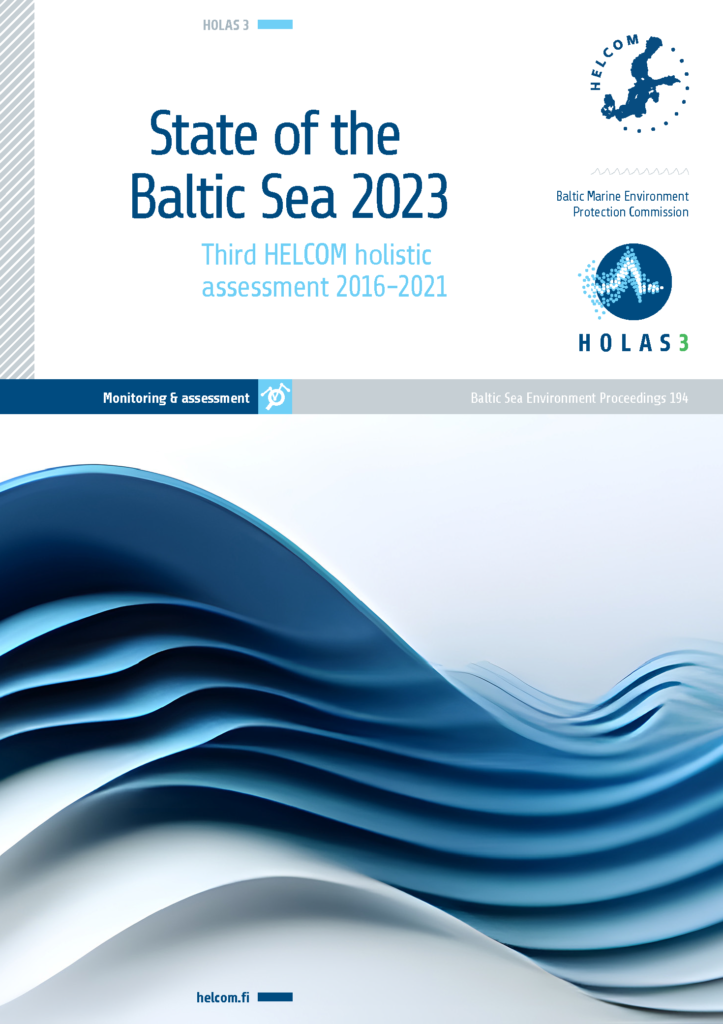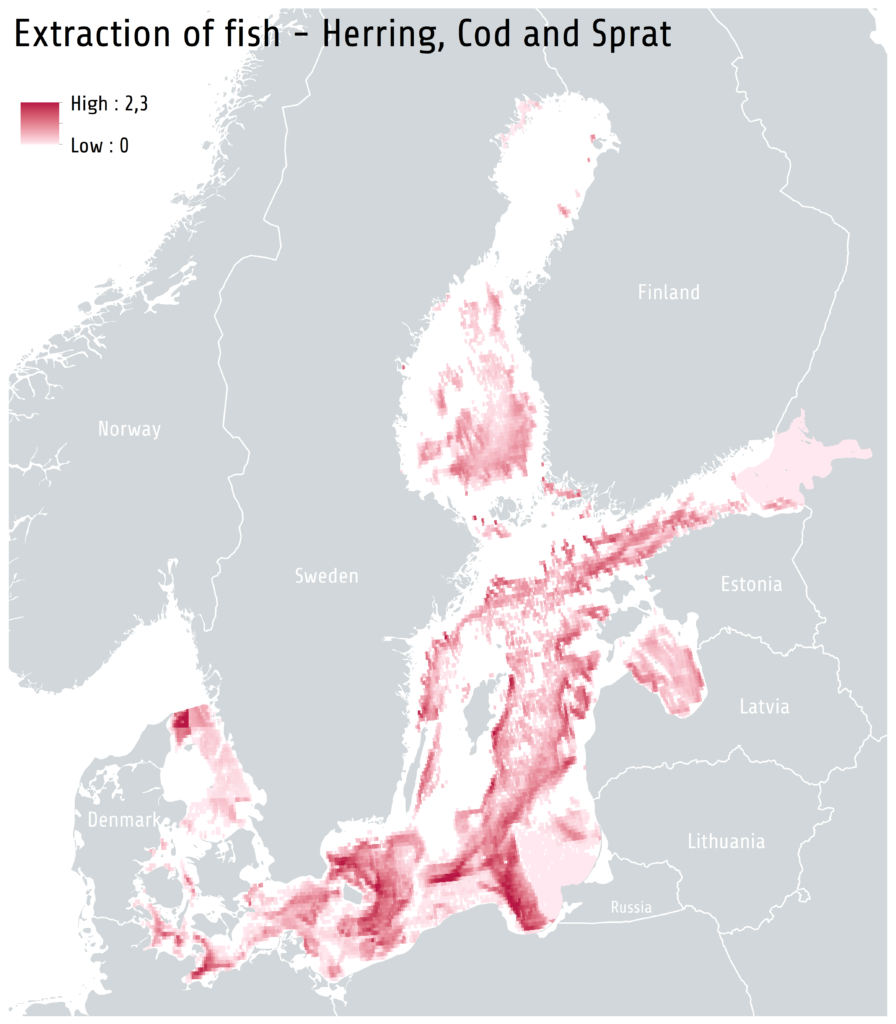OUR ACTIVITIES AT SEA
Pressures from activities at sea
Several pressures on the Baltic Sea derive from our direct use of the sea and its resources. Extractive pressures are associated with fishing, hunting and the extraction of materials from the seabed, such as sand and minerals. Physical pressures come from activities such as dredging, bottom trawling and marine construction.
The assessment results for pressures stemming from sea-based activities are presented here for the extraction of fish, unintentional by-catches, hunting of birds and mammals, and sea-floor loss and disturbance. More detailed results can be found in the HELCOM thematic assessment of biodiversity status (HELCOM 2023a) and its underlying indicator reports.
As these pressures are extractive or lead to physical alterations of the seabed, they have direct impacts on the affected species and habitats. Careful planning and regulation of the activities is needed to ensure sustainable use.

State of the Baltic Sea 2023 — The third HELCOM holistic assessment (HOLAS 3)
State of the Baltic Sea 2023 is a synthesis report that builds on, and integrates, results from a wide range of assessment products produced within the third HELCOM holistic assessment. Its role is to link information from the underpinning assessment products together, thus highlighting the holistic aspects. With this in mind, the summary report focuses on presenting the results and on an in-depth look at why we are seeing these results, providing over-arching context and analysis. The report helps develop a clearer picture of where we are and how things are connected, supporting coordinated and effective measures to strengthen the Baltic Sea environment.


